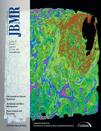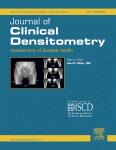McKay, Heather
Person Preferred Name
Heather McKay
Related Works
Content type
Digital Document
Abstract
Purpose
Assessing biological maturity in studies of children is challenging. Sex-specific regression equations developed using anthropometric measures are widely used to predict somatic maturity. However, prediction accuracy was not established in external samples. Thus, we aimed to evaluate the fit of these equations, assess for overfitting (adjusting as necessary), and calibrate using external samples.
<p><p>Methods
We evaluated potential overfitting using the original Pediatric Bone Mineral Accrual Study (PBMAS; 79 boys and 72 girls; 7.5–17.5 yr). We assessed change in R2 and standard error of the estimate (SEE) with the addition of predictor variables. We determined the effect of within-subject correlation using cluster-robust variance and fivefold random splitting followed by forward-stepwise regression. We used dominant predictors from these splits to assess predictive abilities of various models. We calibrated using participants from the Healthy Bones Study III (HBS-III; 42 boys and 39 girls; 8.9–18.9 yr) and Harpenden Growth Study (HGS; 38 boys and 32 girls; 6.5–19.1 yr).
<p><p>Results
Change in R2 and SEE was negligible when later predictors were added during step-by-step refitting of the original equations, suggesting overfitting. After redevelopment, new models included age × sitting height for boys (R2, 0.91; SEE, 0.51) and age × height for girls (R2, 0.90; SEE, 0.52). These models calibrated well in external samples; HBS boys: b0, 0.04 (0.05); b1, 0.98 (0.03); RMSE, 0.89; HBS girls: b0, 0.35 (0.04); b1, 1.01 (0.02); RMSE, 0.65; HGS boys: b0, −0.20 (0.02); b1, 1.02 (0.01); RMSE, 0.85; HGS girls: b0, −0.02 (0.03); b1, 0.97 (0.02); RMSE, 0.70; where b0 equals calibration intercept (standard error (SE)) and b1 equals calibration slope (SE), and RMSE equals root mean squared error (of prediction). We subsequently developed an age × height alternate for boys, allowing for predictions without sitting height.
<p><p>Conclusion
Our equations provided good fits in external samples and provide an alternative to commonly used models. Original prediction equations were simplified with no meaningful increase in estimation error.
Origin Information
Content type
Digital Document
Abstract
Bone is a complex structure with many levels of organization. Advanced imaging tools such as high‐resolution (HR) peripheral quantitative computed tomography (pQCT) provide the opportunity to investigate how components of bone microstructure differ between the sexes and across developmental periods. The aim of this study was to quantify the age‐ and sex‐related differences in bone microstructure and bone strength in adolescent males and females. We used HR‐pQCT (XtremeCT, Scanco Medical, Geneva, Switzerland) to assess total bone area (ToA), total bone density (ToD), trabecular bone density (TrD), cortical bone density (CoD), cortical thickness (Cort.Th), trabecular bone volume (BV/TV), trabecular number (Tb.N), trabecular thickness (Tb.Th), trabecular separation (Tb.Sp), trabecular spacing standard deviation (Tb.Sp SD), and bone strength index (BSI, mg2/mm4) at the distal tibia in 133 females and 146 males (15 to 20 years of age). We used a general linear model to determine differences by age‐ and sex‐group and age × sex interactions (p < 0.05). Across age categories, ToD, CoD, Cort.Th, and BSI were significantly lower at 15 and 16 years compared with 17 to 18 and 19 to 20 years in males and females. There were no differences in ToA, TrD, and BV/TV across age for either sex. Between sexes, males had significantly greater ToA, TrD, Cort.Th, BV/TV, Tb.N, and BSI compared with females; CoD and Tb.Sp SD were significantly greater for females in every age category. Males' larger and denser bones confer a bone‐strength advantage from a young age compared with females. These structural differences could represent bones that are less able to withstand loads in compression in females.
Origin Information
Content type
Digital Document
Abstract
We examined the use of high-resolution peripheral quantitative computed tomography (HR-pQCT [XtremeCT; Scanco Medical, Switzerland]) to assess bone microstructure at the distal radius in growing children and adolescents. We examined forearm radiographs from 37 children (age 8–14 yr) to locate the position of the ulnar and radial growth plates. We used HR-pQCT to assess bone microstructure in a region of interest (ROI) at the distal radius that excluded the growth plate (as determined from the radiographs) in all children (n = 328; 9–21 yr old). From radiographs, we determined that a ROI in the distal radius at 7% of bone length excluded the radial growth plate in 100% of participants. We present bone microstructure data at the distal radius in children and adolescents. From the HR-pQCT scans, we observed active growth plates in 80 males (aged 9.5–20.7 yr) and 92 females (aged 9.5–20.2 yr). The ulnar plate was visible in 9 male and 17 female participants (aged 11.2 ± 1.9 yr). The HR-pQCT scan required 3 min with a relatively low radiation dose (<3 μSv). Images from the radial ROI were free of artifacts and outlined cortical and trabecular bone microstructure. There is currently no standard method for these measures; therefore, these findings provide insight for investigators using HR-pQCT for studies of growing children.
[ABSTRACT FROM AUTHOR]
Origin Information
Content type
Digital Document
Abstract
There are many positive health benefits associated with regular physical activity, and the health risks of inactivity are equally clear. Most of the research on physical activity, however, has been contained within the sport, exercise and recreation disciplines. Studies on the implications of physical activity for disease prevention, management and rehabilitation are increasing but are still limited in number and scope. As well, the relationship between physical activity and the well-being of individuals and communities has not been adequately understood, and the linkages between disease, social and psychological well-being, and physical activity need to be explored more fully. Finally, it has been argued by feminist researchers that the biological, psychological, social and cultural experience of being female in our society has not been adequately addressed in much of the health and exercise literature.
This literature review originated from the difficulties policy makers, practitioners, and programmers experienced in accessing diverse sources of research, and the challenges they faced while attempting to make sense of conflicting conclusions. Notwithstanding, the current health and well-being trends in the Canadian population provided an additional imperative for this project. Girls are less active than boys at most ages, women have been experiencing increasing rates of various diseases such as fibromyalgia, coronary heart disease and cancers, and both girls and women experience body image dissatisfaction, low self-esteem and eating disorders at a much higher rate than boys and men. This literature review tackled the complex relationship between health and physical activity in the context of girls and women’s lives through a multi-disciplinary and holistic approach. From this analysis, future research strategies and policy implications to support and improve the health and well-being of girls and women were identified.
Origin Information



